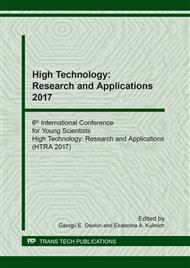p.311
p.317
p.323
p.329
p.336
p.346
p.352
p.358
p.364
Mathematical Model of Powder Material Particles Heating in Thermal Spraying
Abstract:
This paper discusses the mathematical model of powder material particles heating in the gas flow when applying plasma gas and thermal coatings. It has been assumed that while moving in the plasma, the particle is heated by convective heat transfer and radiative heat transfer. To ensure accuracy and validity of calculation, two characteristic regions have been outlined: Core, where the temperature, density, and viscosity of plasma, as well as the other parameters are assumed as constant; and the region from the core to the coated surface (substrate), where these parameters are the functions of the plasma flow coordinates. One of the assumptions is that the shape of the particles is near-spherical, and the thermal flow’s action to the particles’ surface is uniform. Special attention has been paid to correct selection of criteria , which allowed to simplify the solution and reduce it to the ordinary first-order differential equation derived from the particle heat balance equation.
Info:
Periodical:
Pages:
336-345
Citation:
Online since:
April 2018
Authors:
Price:
Сopyright:
© 2018 Trans Tech Publications Ltd. All Rights Reserved
Share:
Citation:


